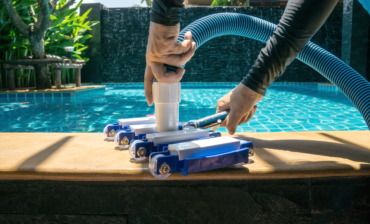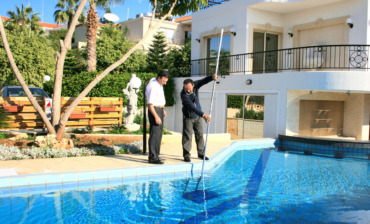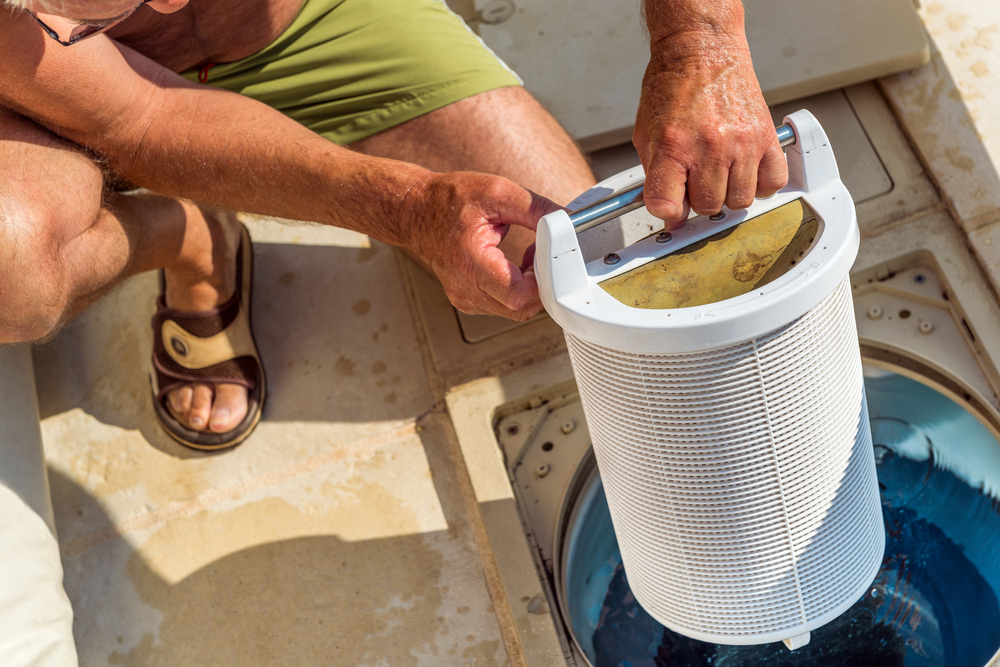 If you are a newcomer to Florida and fortunate enough to have your own swimming pool, its upkeep during what passes for winter in the Sunshine State will likely bear little resemblance to the winterizing techniques you may have used up north. In fact, some of those northern techniques—like draining the pool until the water level is below the pool skimmers (to prevent ice from damaging the pipes)—can actually do harm to a Florida pool.
If you are a newcomer to Florida and fortunate enough to have your own swimming pool, its upkeep during what passes for winter in the Sunshine State will likely bear little resemblance to the winterizing techniques you may have used up north. In fact, some of those northern techniques—like draining the pool until the water level is below the pool skimmers (to prevent ice from damaging the pipes)—can actually do harm to a Florida pool.
As mild as they typically are, it is important to recognize that Florida winters may still cause problems for the unsuspecting pool owner. The biggest of these problems, algae, is best avoided by always remembering that maintaining your pool is a year-round activity. Indeed, cold weather does not kill algae. We emphasize this point because too many people believe that chillier days with fewer hours of sunlight will cause algae to die off naturally, just like leaves die and fall off the trees.
But leaves always make a comeback in the spring, and so will algae, unless you make it a practice to treat aggressively against the slimy green menace all year long. Don’t lower your guard just because the days get shorter and the mercury dips. Falling temperatures and less sunshine may stymie algae growth for a while; with extended cold spells causing it to become dormant. But eventually the algae will wake up and start growing again as temperatures begin to moderate.
If you remember nothing else about how to properly maintain your Florida pool in the winter, remember this: Keep the chemicals balanced and the water circulating. These are always your most important goals.
 Maintain a regular weekly cleaning regimen. Clean the filter, vacuum as usual and empty the skimmer traps to prevent debris from clogging the system. Even though many Florida pools are protected from mosquitos and blowing leaves by screened cages, they still manage to collect all sorts of dirt, debris and chemical residue.
Maintain a regular weekly cleaning regimen. Clean the filter, vacuum as usual and empty the skimmer traps to prevent debris from clogging the system. Even though many Florida pools are protected from mosquitos and blowing leaves by screened cages, they still manage to collect all sorts of dirt, debris and chemical residue.
Along with your cleaning regimen, get into the habit of testing your pool water at least once a week during the cold months. With no one using it, your pool will likely require fewer chemicals to keep algae from forming; and you can probably cut back on the number of hours you run the pump as well. Most experts suggest running them for 4-6 hours per day in the winter, versus 8-12 hours in the summer.
Another challenge Florida pool owners face is evaporation. With winter being Southwest Florida’s driest season, evaporation can reduce the water level of your pool by as much as one to two inches per week. Be sure to monitor its level weekly and add water as necessary to guard against your filter ingesting more air than water—which will dramatically reduce its lifespan, not to mention its effectiveness at circulating the water and fighting algae. If your pool appears to be losing water at a consistently higher rate, this may be symptomatic of a leak.
A simple way to determine whether water loss is due to normal evaporation or some type of leakage is as follows:
- Place a bucket of water on the step of your pool, making sure that the water level inside the bucket is the same as the water level outside the bucket. Mark the water level on the inside of the bucket and the pool level on the outside of the bucket. Then wait 24–48 hours.
- Any water loss inside the bucket will be due to evaporation. However, if the pool level drops below the bucket level, you most likely have a leak and should consult a pool leak detection specialist.Lastly, at the end of each swimming season, it is never a bad idea to double check that all child- safety barriers—including fences and gates—are in place and working properly. Moreover, you should also remove all pool toys, floats and other accessories from the pool area and store them in a dry place. This not only protects them from mold and mildew, but also prevents them from attracting children to the pool area.


Comments